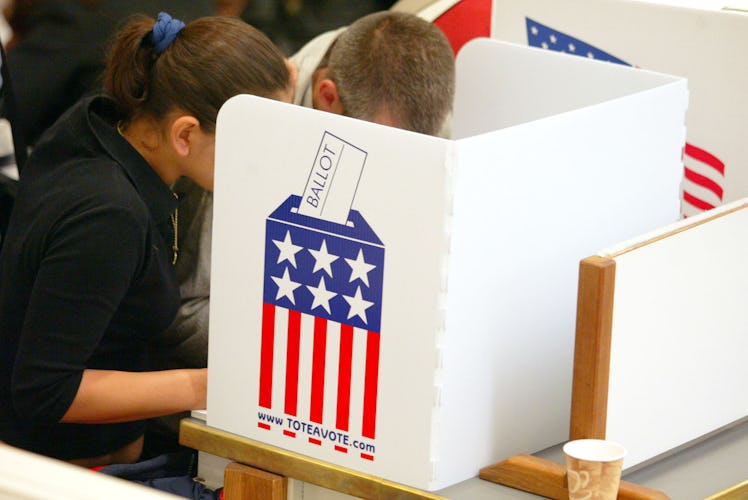
Here's What You Should Know About Provisional Ballots Before The Midterms
With the midterm elections being one of the most popular topics in recent weeks, combined with reports that some voters have found themselves kicked off registration rolls, you've probably heard some talk about provisional ballots. But what, exactly, is a provisional ballot? Here's everything you need to know about it and whether you'll need to cast your vote on one on Nov. 6.
Simply put, a provisional ballot is used for voters who run into issues at the polls, such as the lack of proper identification or an outdated address. However, they aren't counted in the same manner as regular ballots (in most states at least). Instead of being put through the voting-machine immediately, the provisional ballot is held separately from the standard ballots until after the election, per the National Conference of State Legislators (NCSL). The ballots are then checked for eligibility, with the board of elections or local election officials reviewing government records or seeking more information from the voter, including photo ID that they failed to bring to the polling place or proof of residence. The ballots only count after the problem is resolved.
If you make it all the way to your polling place on Nov. 6 and find that you aren't on their list of names, some social media users have recommended telling poll workers this as a back-up plan: "Give me a provisional ballot with a receipt as required by law when requested." As fact-checking site Snopes points out, although states vary in how they handle them, federal law actually requires that election officials to provide "ineligible voters" with provisional ballots, according to Section 302 of the Help America Vote Act (HAVA). So you might definitely want to keep this in mind. Importantly, some states also require voters who use provisional ballots to follow up to confirm their eligibility to vote, so it's important to check out your state's rules.
Provisional ballots might be extra important to know about come November, given that voters can sometimes run into problems at their polling place. For example, in New York during the 2018 primaries, many voters reported arriving at their polling place to find their names weren't on the list, while in Georgia, thousands of voter registrations are stuck in a "pending" status with only weeks to go before the midterms.
To avoid running into this problem at the polls altogether, there are some safety measures you can take. For starters, if your state requires ID to vote, you should make sure you have proper identification. According to USA.gov, driver's licenses, state-issued ID cards, military ID cards and passports are usually sufficient forms of identification to vote at the polls. But to be on the safe side, check your state's laws to determine what all they allow first or if they even have voter ID laws. Some states will allow you to vote with non-photo ID like birth certificates or social security cards, while some won't accept student IDs.
Another important step is to make sure you're registered to vote in the first place because, while you might be able to submit a provisional ballot, your vote may not count if you're not permitted to vote. This is especially crucial for people who recently moved or those who simply forgot to register. To check your voter registration status, head to Vote.org (which says the process takes just 30 seconds) and click the red box on the right side of the page that says "check registration status." From there, you'll be redirected to a page where you'll have to fill in some simple information like your name, address, phone number, and date of birth. And voilà: that's it. It's really just that simple.
If you know you're registered and just need to know where to vote, you can call your local voter registration office (a quick Google search should churn up the number if you don't know it) and once you provide some personal information like your name and address, they should tell you the exact location where you can vote. Or, on Vote.org, there's a "polling place locator" that's just as easy to figure it out. Once you're on the website, click the red button that says "find your polling place." There's gonna be two options: the first allows you to find your state on the list and use their individual polling place locator. The other option allows you to type in your address in the "polling place locator" at the top of the page. The process takes around five minutes, which is a little on the lengthier side, but once you're all finished, it'll be your time to shine!
...Well, almost. The polls open up on Nov. 6, and then it'll be your time to show up and show out. See you then!